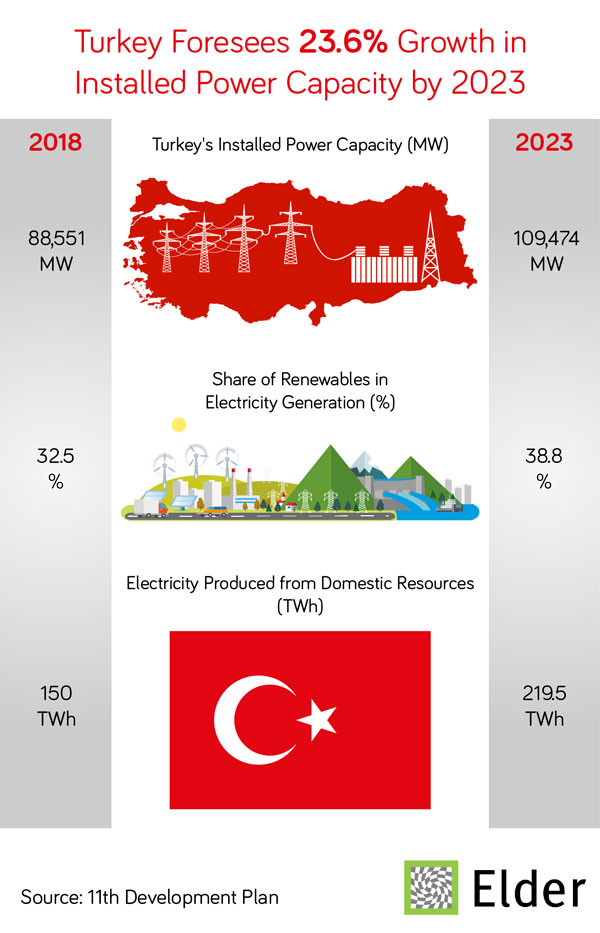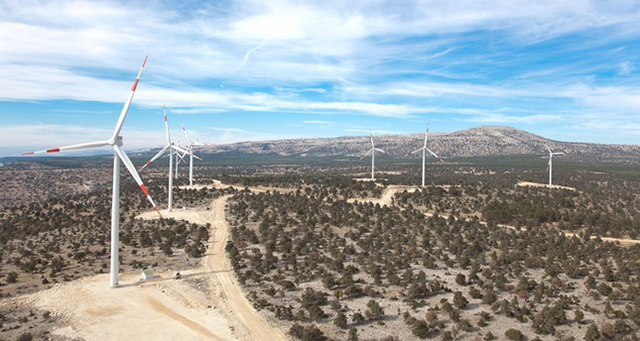
The increasing share of domestic resources in power generation has led to a 15.4% decrease in electricity generation from imported resources, saving Turkey around $1.4 billion.
Last month, Turkey's installed power recorded an increase of 3.6% compared to the same period of last year and reached 90,449 megawatts (MW) as the investments in power generation soared in order to meet the growing energy demand of Turkey.
In the period of January to July this year, the share of local resources in power generation recorded a growth of 29.4% and hit over 116.7 million megawatt hours, according to the information obtained from Energy and Natural Resources Ministry. The aggregate share of renewable resources in electricity generation is calculated at 44.7% and rose to 87.6 million megawatt hours.
From Jan. 1 to July 31, electricity generation from natural gas decreased by 24 million megawatt hours and Turkey saved around $1.3 billion on its energy bill. In the same period, the power generation from imported coal also shrank by 4 million megawatt hours, again saving Turkey $102.5 million. Electricity imports in the first seven months of the year fell by 23.4% and dropped to 1.15 gigawatt hours (GW). In the same period, the electricity export rose by 21.6% and hit 1,795 gigawatt hours.
Source: Daily Sabah
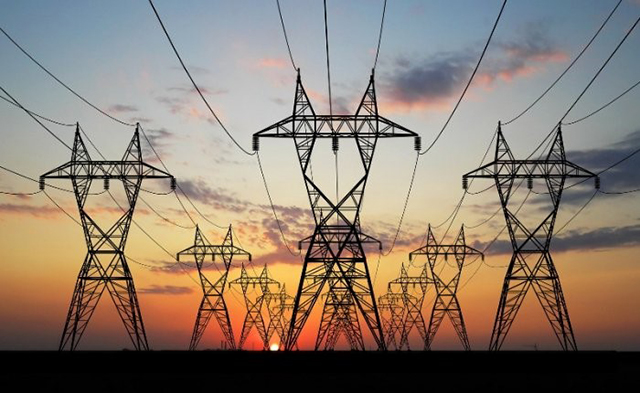
Turkey's electricity import bill for the January-June period of 2019 decreased by 55.14% compared to the same period of 2018, according to Turkish Statistical Institute's (Turkstat) data.
The data shows that Turkey paid nearly $13.53 million for electricity imports in the first half of 2019, compared to $30.16 million for the same period of 2018.
The amount of electricity imported between January and June reached nearly 332.12 million kilowatt-hours (kWh), compared to 780.86 million kWh in the first half of 2018.
Turkey bought electricity from five countries - Greece, Czechia, Bulgaria, Georgia and Azerbaijan, the data shows, out of which Bulgaria held the biggest share of electricity exports to Turkey. Bulgaria bought nearly 232.34 million kWh of electricity out of a total amount of 332.12 million kWh in the first half of 2019 paying $9.95 million over this period.
Georgia followed Bulgaria with 12.69 million kWh of imports for which Turkey paid nearly $2.95 million. Azerbaijan, Greece and Czechia followed with 23.49 million, 6.24 million and 294 thousand kWh of electricity imports, respectively. Turkey paid $1.19 million to Azerbaijan, $265.960 to Greece and $12.770 to Czechia for imports in the first half of the year.
June saw the highest electricity imports in the January-June period in 2019 when Turkey imported 78.63 million kWh of electricity and paid $2.47 million.
Source: AA

The global cybersecurity spend in critical infrastructure is expected to reach $135 billion in 2024 by market intelligence firm ABI Research.
Despite billions being directed to secure critical infrastructure, digital security investments in smart cities will continue lagging until 2024. The lag seeds the future vulnerabilities of the IoT ecosystem whilst on the other hand, the use of IoT by the urban population to develop intelligent, efficient and sustainable solutions is set to increase.
The number of wide-area network smart city connections is expected to reach 1.3 billion of which 50% will be LPWA-LTE and LPWA- powered.
Most investments in technologies such as NB-IoT are in lowering bandwidth cost, increasing coverage, and lowering latency, at the expense of resiliency against cyber-attacks. 56% of the $135 billion is expected to be accounted for by the financial, information and communication technologies and defense industries.
The energy, healthcare, public safety, transport and water and wastewater industries are expected to account for 46% of the market share. This means the industries will be left underfunded and vulnerable to cyberattacks.
Dimitrios Pavlakis, industry analyst at ABI Research, said: “Smart cities are increasingly under attack by a variety of threats. These include sophisticated cyberattacks on critical infrastructure, bringing industrial control systems (ICS) to a grinding halt, abusing low-power wide-area networks (LPWAN) and device communication hijacking, system lockdown threats caused by ransomware, manipulation of sensor data to cause widespread panic (e.g., disaster detection systems) and siphoning citizen, healthcare, consumer data, and personally identifiable information (PII), among many others.
“In this increasingly connected technological landscape, every smart city service is as secure as its weakest link.
“Lack of cryptographic measures, poor encryption key management, non-existent secure device onboarding services, weaponized machine learning technologies by cyber-attackers, poor understanding of social engineering, and lack of protection versus distributed denial of service (DDoS) attacks are just are some of the key issues contributing to the amplification of cyber-threats in smart city ecosystems. This is further exacerbated by the lack of digital security investments and will, unfortunately, jeopardize the key elements of intelligence, efficiency, and sustainability of future smart city deployments.”
Source: Smart Energy International
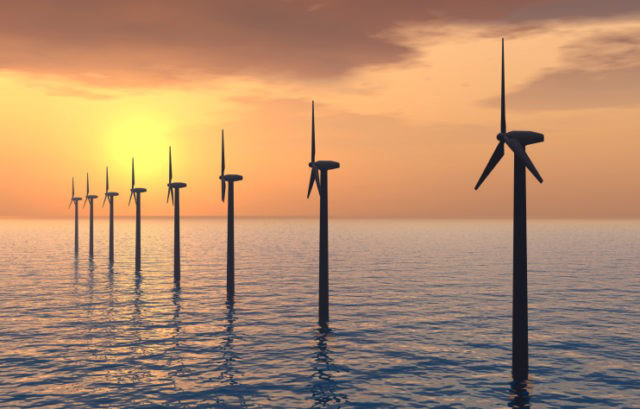
The offshore wind market could reach a cumulative capacity of up to 193GW by 2030 and more than 500GW by 2050, according to a report by the National Renewable Energy Laboratory (NREL).
The 2018 Offshore Wind Technologies Market report forecasts the cumulative capacity to range from 154 to 193GW by 2030 and the U.S. capacity to grow to 16GW in the next ten years. The global wind industry installed a record 5,652MW of offshore wind capacity in 2018 and by the end of the year, cumulative global offshore wind installed capacity grew to 22,592MW from 176 operating projects, the report says.
In 2018, the U.S. offshore wind energy project development and operational pipeline grew 1.4% to a potential generating capacity of 25,824MW. According to NREL, the report highlights opportunities for the U.S. offshore wind development and provides policymakers, regulators, developers, researchers, the supply chain, and others with quantitative information about the local and worldwide market, technology, and cost trends.
Source: Offshorewind.biz

In a study at the University of Waterloo, researchers found that there is a lack of trust among charging service providers, property owners and owners of electric vehicles. However, the team believes a blockchain could resolve these issues.
According to the scientists, an open blockchain platform could allow all parties to access the charging data to ensure that it has not been tampered with. Using a blockchain-oriented charging system will, therefore, allow electric car owners to see if they are being overcharged while property owners will know if they are being underpaid for providing access to the charging station.
Moreover, there is a third element to this equation as “energy services are increasingly being provided by entities that do not have well-established trust relationships with their customers and partners,” explains Christian Gorenflo, a PhD candidate in Waterloo’s David R. Cheriton School of Computer Science. “In this context, blockchains are a promising approach for replacing a central trusted party, for example, making it possible to implement direct peer-to-peer energy trading.”
The study builds on the cooperation with an unnamed EV-charging service provider, that works with property owners to install charging stations which EV owners can use for a fee. The revenue stream from these charging stations is then shared between the charging service provider and each property owner. However, the property owners must trust the provider to compensate them fairly for the electricity used when utilizing the provider’s equipment.
The case study led the researchers to identify three steps necessary for the incorporation of blockchain technology into an energy system. The first is to establish whether there is a trust issue that hinders the execution of the service.
If there is, one needs to design a minimal blockchain system, including smart contracts, that resolves the trust issues identified in the first step.
Finally, with the trust-mitigating blockchain in place, the rest of the system can be migrated iteratively over time. This allows the business model to eventually grow from a legacy/blockchain hybrid into a truly decentralized solution.
“In the end, we could even have a system where there is machine-to-machine communication rather than people-to-machine. If an autonomous vehicle needs power, it could detect that and drive to the nearest charging station and communicate on a platform with that charging station for the power,” said Gorenflo.
Source: Electrive
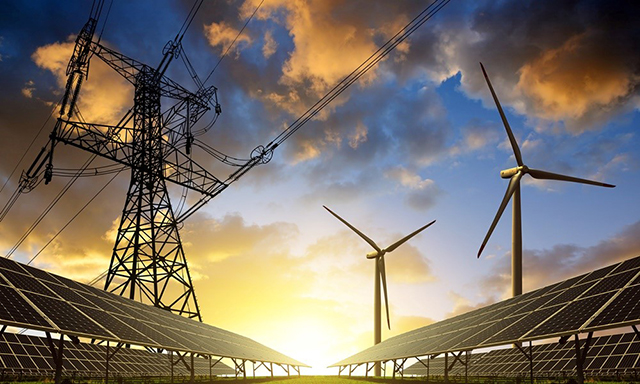
Germany's renewables levy, the EEG surcharge is expected to rise slightly from 6.41 cents per kilowatt-hour (kWh) this year to between 6.5 and 6.7 in 2020, according to calculations by think tank Agora Energiewende*. The main reasons for the expected rise are increasing wind power capacity and a declining balance in Germany’s “green energy account”, writes Agora Energiewende. After having remained relatively stable in recent years, Agora Energiewende forecasts that the levy will reach its final peak in 2021 at around 7 cents/kWh. Around then, the first renewable energy plants will have lived out their 20 years of set feed-in payments guaranteed by the Renewable Energy Act (EEG), leading the levy to "gradually fall", says head of Agora Energiewende Patrick Graichen.
The Renewable Energy Act (EEG) has guaranteed producers of renewable power in Germany 20 years of set feed-in payment per kWh since the year 2000, in order to make renewable sources competitive with conventional energy. For many installations, that two-decade guarantee is set to expire just as Germany wants to boost the share of renewables in power consumption to 65 percent.
In the first half of 2019, rising carbon prices have already started "driving climate-damaging coal-fired power plants out of the market," said Graichen. With a carbon price of 50 euros per tonne of CO2 (currently at 27 euros), "we could get a largely self-supporting energy transition," said Graichen. Already now, the first solar projects in Germany are being built without any support from the EEG-levy, he added.
Source: Clean Energy Wire
Energy Infrastructure: Affordability Enabler or Decarbonization Constraint
The World Energy Council has developed a set of principles for designing an Infrastructure Action Plan to ensure that decommissioning, stranded assets and/or repurposing does not become a barrier to affordable decarbonization. These principles are based on deep-dive interviews with energy leaders from around the world, supplemented with research.
Please click here to read the full report.
24th World Energy Congress
September 09 - 12 / Abu Dhabi
Turkey Energy Forum
October 02 - 03 / Shangri La Bosphorus, Istanbul
Turkey Energy Summit
October 06 - 08 / Antalya
12. International Energy Congress- EIF
November 06 - 08 / Ankara
European Utility Week
November 12 - 14 / Paris
1. International Energy Summit 2019
November 21 - 24 / Antalya

